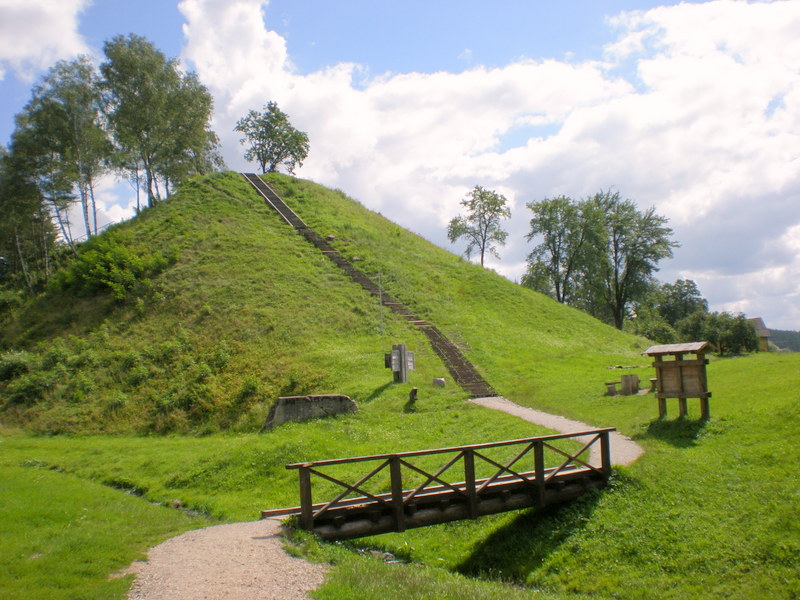About program
- Details
- Category: LHFA
- Published on Saturday, 16 March 2013 18:21
- Written by Petras (LY2KM)
- Hits: 3868

Hill fort (castle hill) is a type of hill or mountain upon which a castle is standing or used to be standing, i.e. castle hill. Objects called as hill forts are usually very different in appearance and internal structure, ranging from the early hill forts mostly similar to regular hills to clearly visible trenches and mounds of fortified castle locations. The hill fort as a defensive structure is comprised of the following two main elements: the fortified location itself and its earthwork. It is considered that the Lithuanian name of hill fort (Lith. piliakalnis) was not derived from the word castle (Lith. pilis) but rather from the verb to pour (Lith. pilti). Most often the Lithuanian hill forts are naturally formed hills and capes with human-made earthworks of defensive purpose (mounds, steeps, terraces and ditches). A settlement was usually located near the castle and sometimes a fortified outwork was constructed.
Hill forts date back to 1000 years BC. They are the most important heritage of the pagan Baltic culture. The hill forts were not that predominant in other ethnic groups and nations, including
At first, fortified settlements used to be built on hill forts. Later on, in the 5th – 6th century they became shelters to people living at the base of the hill to hide away from attackers. In the beginning, the hill forts served their purpose by protecting people from the attacks of the local tribes and later – from the forces of the Teutonic Order, the Swedish and the Slavs. Ever since the 10th century people have started to reside on the hill forts and build wooden castles where the dukes lived. The hill forts stated losing their value at the end of the 14th century and the beginning of the 15th century. The hill forts in
Currently, hill forts are deemed archeological monuments protected by the State. They are included in the cultural heritage lists as places of interest and in the respective catalogues. The hill forts are cared for by the institutions responsible for protecting monuments. The present Lithuanian territory used to have over 1000 hill forts, 800 of which remained intact. Only about 10% of the hill forts were researched. Most of the hill forts are concentrated in the eastern part of
In 2005, the Ministry of National Defence of the
